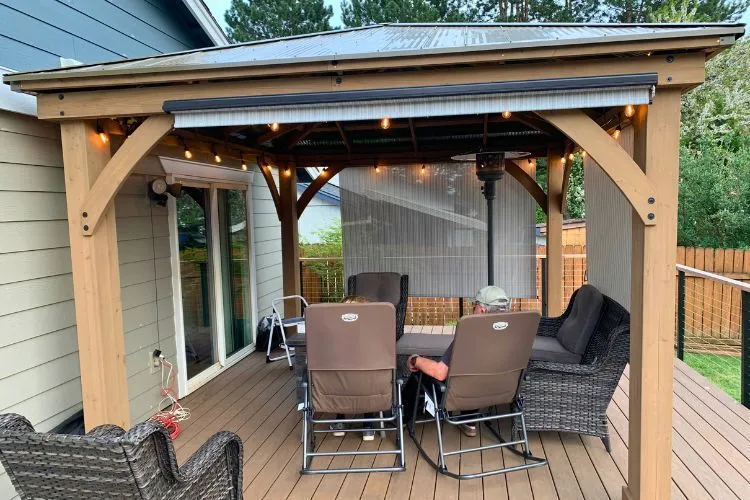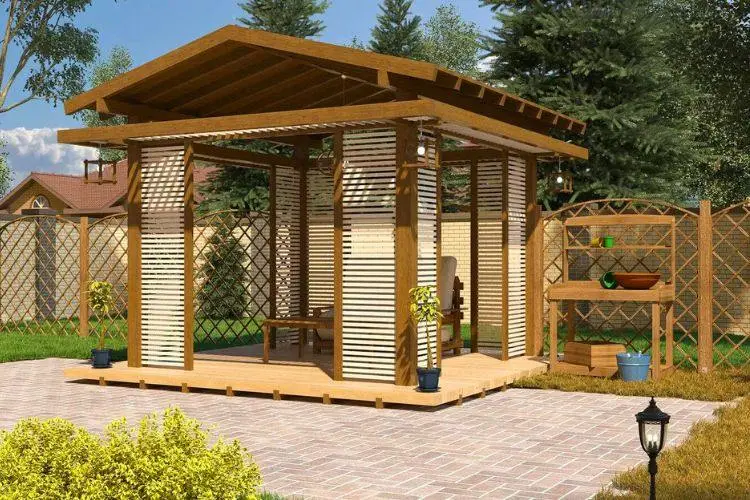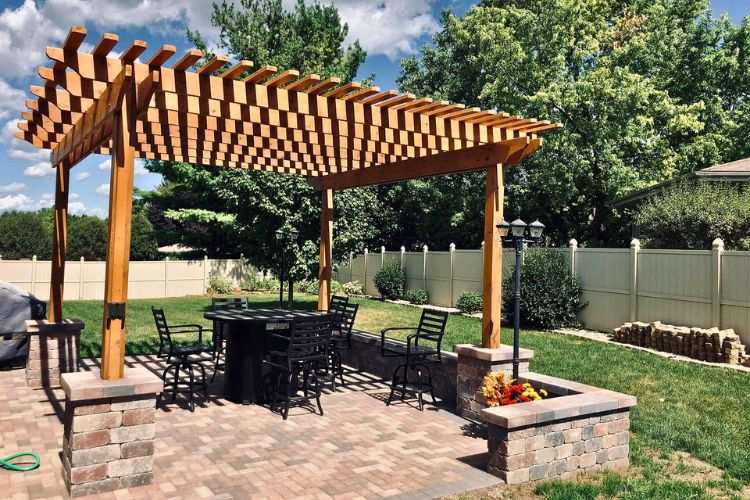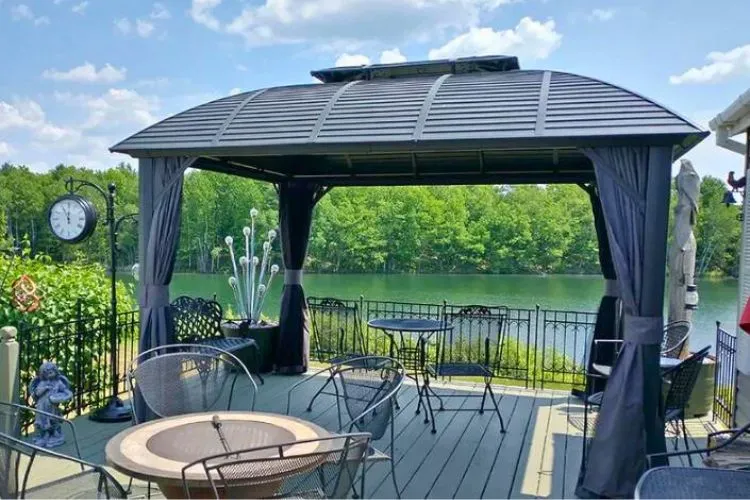Gazebos serve as splendid additions to outdoor spaces, offering a sheltered spot to enjoy nature and entertain guests.
However, the undesirable issue of condensation can affect their function and structural integrity.
But, do you know what causes condensation in gazebos?
Well, understanding the causes, effects, and solutions for condensation in gazebos is crucial for maintaining their condition and enhancing their usability.

Contents
Understanding Condensation
Condensation occurs when water vapor in the air comes into contact with a cooler surface and turns into liquid.
This process can lead to water droplets forming on the interior surfaces of gazebos. Key factors influencing condensation include temperature differences, high humidity levels, and poor ventilation.
What Causes Condensation in Gazebos?
Temperature Variation
Temperature differences between the inside and outside of a gazebo can lead to condensation.
On cooler days or nights, the warmer air inside the gazebo can condense when it hits the colder surfaces, forming moisture.
Seasonal changes can intensify this issue, with colder months seeing a rise in condensation problems due to more significant temperature variations.
High Humidity Levels
Humidity levels play a significant role in condensation. When the air inside a gazebo is humid, it contains more water vapor.
If this moist air comes into contact with cooler surfaces, condensation can occur. Outdoor elements such as nearby plants or bodies of water can increase the humidity levels around gazebos, contributing to the issue.
Poor Ventilation
Adequate ventilation is essential in preventing condensation. Without proper airflow, moisture-laden air cannot disperse, accumulating and leading to condensation on cooler surfaces.
Ensuring a gazebo is well-ventilated helps in managing moisture levels and reducing the risk of condensation.
Materials and Construction
The choice of materials and construction methods can affect condensation in gazebos.
Some materials and construction flaws, like lack of insulation or improper sealing, can make a gazebo more prone to condensation.
It’s essential to consider materials and construction techniques that minimize these risks.
Preventing and Managing Condensation in Gazebos
Improving Ventilation
Improving airflow can significantly reduce condensation. This can be achieved by installing vents or fans, opening windows, or designing the gazebo to encourage natural air circulation.
Good ventilation helps remove moist air, thus preventing its accumulation.

Using Dehumidifiers
In areas with high humidity, using a dehumidifier can help control the moisture levels inside a gazebo.
Dehumidifiers work by removing water vapor from the air, reducing the likelihood of condensation forming on cooler surfaces.
Material Choices and Construction Techniques
Choosing the right materials and construction methods can prevent condensation issues.
Materials that insulate well and construction techniques that avoid thermal bridging can help maintain a more consistent temperature inside the gazebo, reducing condensation. Proper sealing and insulation are crucial in this regard.
Regular Maintenance and Checks
Regular maintenance can help detect and address early signs of condensation.
Checking for leaks, ensuring surfaces are properly sealed, and monitoring humidity levels inside the gazebo can prevent minor issues from becoming major problems.
Climatic Influences on Condensation
Understanding the climatic influences on condensation is paramount for maintaining the structural integrity and functionality of outdoor spaces like gazebos.
The amount of condensation a gazebo experiences can significantly vary based on regional climate considerations.

Areas with high humidity levels, such as coastal regions or places near large bodies of water, are more prone to condensation issues.
This moisture can accumulate on and within the structure, promoting wear and potential damage over time.
Seasonal variations also play a crucial role in condensation formation. During colder months, the temperature difference between the inside and outside of a gazebo can lead to condensation on interior surfaces.
Conversely, in warmer seasons, especially in humid climates, the outer surfaces may collect moisture.
Understanding these patterns is essential for implementing strategies to mitigate condensation, such as improving ventilation, utilizing moisture barriers, or selecting materials that are less susceptible to damp conditions.
Addressing these climatic and seasonal factors can help extend the life and aesthetics of gazebos in varying environments.
Design and Placement Considerations
The placement and design of a gazebo significantly influence its susceptibility to condensation.
Strategically positioning a gazebo to benefit from natural sunlight and airflow can markedly reduce moisture accumulation.

Orientation matters; ensuring the gazebo is situated to avoid prevailing winds while maximizing sun exposure aids in keeping the structure dry.
Design features also play a crucial role in mitigating condensation. Incorporating ample ventilation through louvers or vents promotes air circulation, preventing moisture from becoming trapped.
Overhangs or gutters can divert rainwater away, minimizing the exposure of the gazebo’s surfaces to dampness.
By combining thoughtful placement with smart design elements, one can effectively diminish the risk of condensation, thus preserving the gazebo’s condition and comfort.
Additional Tips
In addition to the methods mentioned above, making seasonal adjustments can further minimize condensation.
For instance, during colder or more humid months, increasing ventilation or using a dehumidifier more frequently can help.
For serious condensation issues, consulting with a professional can provide tailored solutions.
Frequently Asked Questions (FAQs)
Why does my gazebo have more condensation in the morning?
Morning condensation is common due to the temperature drop overnight. Cooler surfaces inside the gazebo cause the warmer, moist air to condense into water droplets.
Can condensation damage the structure of my gazebo over time?
Yes, consistent condensation can lead to wood rot, mold, and mildew, damaging the gazebo’s structure and appearance if not addressed.
Is it necessary to use a dehumidifier in a gazebo?
In areas with high humidity or if the gazebo is prone to condensation, using a dehumidifier can be beneficial in reducing moisture levels.
How do I know if my gazebo has adequate ventilation?
Adequate ventilation typically means the air inside the gazebo can circulate freely, with minimal moisture buildup. Signs of poor ventilation include lingering condensation, damp smells, or mold growth.
Can plants inside my gazebo contribute to condensation?
Yes, plants release moisture into the air, which can increase humidity levels and contribute to condensation, especially in enclosed areas.
Conclusion:
Condensation in gazebos is a manageable issue when understood and addressed correctly.
By recognizing the causes, such as temperature variations, high humidity levels, poor ventilation, and unsuitable materials and construction, and implementing effective solutions, you can enjoy your gazebo throughout the year.
Regular maintenance and appropriate adjustments can ensure your gazebo remains a cherished outdoor retreat.
By addressing the causes of condensation and taking proactive measures to prevent it, you can maintain a comfortable and durable gazebo for years to come.

Sergio Gomes, a passionate advocate for outdoor living and the male voice behind Shades Authority. With years of experience, Sergio is your trusted source for expert insights on gazebos, pavilions, cabanas, pergolas, and all things outdoor shade solutions. Join him on a journey to transform your outdoor spaces into stunning, functional retreats
